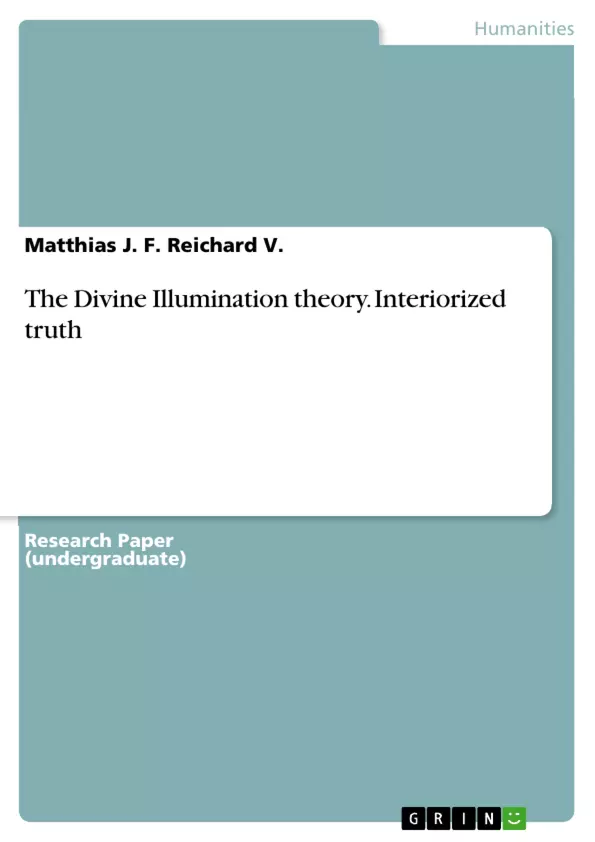The following academic paper discuss man before God, examining in great detail the different interpretations of the so-called theory of Divine Illumination with major focus on the works of St. Augustine of Hippo, arguably one of the greatest proponents of the latter.
Table of Contents
- Introduction
- Divine illumination in Pre-Augustinian thought - the ancient background.
- Divine illumination in Neo-platonic thought - the (pre-)contemporary Platonists
- Divine illumination in the works of St. Augustine - Christ the inner teacher….
- Conclusio
- Bibliography
Objectives and Key Themes
This academic paper aims to examine the concept of divine illumination, specifically focusing on the interpretation of St. Augustine of Hippo, one of its prominent proponents. It delves into the philosophical implications of this theory, exploring how the divine light enables the human mind to acquire spiritual knowledge.
- The historical development of the theory of divine illumination
- The influence of ancient thinkers like Plato and Aristotle on Augustine's thought
- The role of divine grace in illuminating the human intellect
- The distinction between philosophical and theological interpretations of divine illumination
- St. Augustine's contributions to the theory of divine illumination
Chapter Summaries
- Introduction: This chapter introduces the concept of divine illumination and its significance in Christian and Augustinian thought. It highlights the historical context of the theory and its application in philosophy and theology.
- Divine illumination in Pre-Augustinian thought - the ancient background.: This chapter explores the origins of the divine illumination theory, tracing its roots in ancient Greek philosophy, particularly the works of Plato and Aristotle. It examines their use of the analogy of light in relation to understanding and knowledge.
- Divine illumination in Neo-platonic thought - the (pre-)contemporary Platonists: This chapter examines the role of the theory of divine illumination in the development of Neo-Platonism. It analyzes how this philosophical school incorporated and further developed the ideas of Plato and other pre-medieval thinkers.
- Divine illumination in the works of St. Augustine - Christ the inner teacher….: This chapter focuses on St. Augustine's interpretation of the divine illumination theory. It analyzes how Augustine's theological and philosophical thought contributes to the understanding of divine grace and its role in illuminating the human intellect.
Keywords
Divine Illumination, St. Augustine of Hippo, Neo-Platonism, Philosophy, Theology, Spiritual Knowledge, Divine Grace, Intellect, Enlightenment, A Priori Knowledge, Christ, Holy Spirit, Truth, Rational Soul, Transcendental.
- Quote paper
- Matthias J. F. Reichard V. (Author), 2018, The Divine Illumination theory. Interiorized truth, Munich, GRIN Verlag, https://www.grin.com/document/491385



